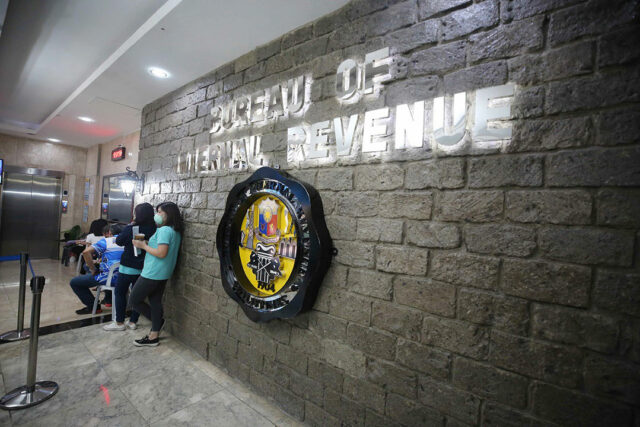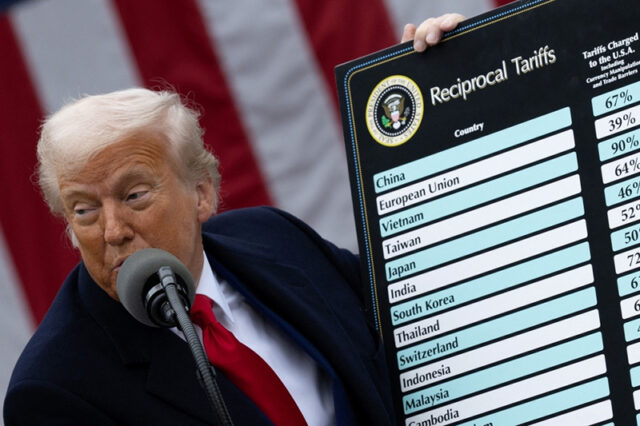Style (04/07/25)
COS debuts spring/summer collection
ON April 2, COS returned to the runway for its first-ever show in Athens, presenting the brand’s Spring Summer 2025 collection. The runway was brought to life within the cavernous Dionyssomarble Quarry. The enveloping marble walls created a striking contrast to the collection’s clean minimalism and sculptural lines. Models descended a steel staircase, looping in and out of the cave, showcasing 35 looks. The collection explores precision in cut and signature detailing. The womenswear features softly sculptured silhouettes and draped elements, while tailoring is reimagined with a deconstructed sensibility. Cascading fabrics create fluidity, and ethereal transparency reveals glimpses of the body. The looks were finished with pointed suede mules, classic ballerinas, and minimalist knitted sock boots. A pared-back utility style in menswear takes center stage, emphasized through functional details. Classic styles are revisited with sleeveless tailoring. There are silk sets and Bermuda shorts offering a refined yet relaxed summer staple. Light summer leather jackets are layered over shirts with soft rib textures. The menswear garments are complemented by soft leather sandals or mule loafers. This season, COS also introduces a unique marbled print inspired by Renaissance paintings, created by pressing flower buds against a lens, capturing a soft blur with delicate details. The seasonal palette is built around off-whites, warm earth tones, and deep brown. Muted blues transition into rich navy, while soft terracotta adds vibrancy to womenswear. A classic shirt style is crafted from Materra Hydroponic Cotton — cotton grown in an indoor environment with controlled application of water and nutrients without the need for arable land or conventional irrigation. A selection of the show items is available immediately at COS stores and on cos.com.
Uniqlo opens new Imus roadside store
UNIQLO extends its reach south of Manila by opening its newest roadside store in the City of Imus, Cavite. The new store is found along the stretch of Aguinaldo Highway. It offers an expanded selection of LifeWear items for the entire family, while having access to a dedicated parking facility. Other features that are staples for all roadside stores across the country include PWD-friendly passageways, and app-to-in-store services such as Click and Collect for faster transactions. There are a number of promos marking the opening, including a free Uniqlo toiletry bag for shoppers with a minimum single-receipt purchase of P3,000 made between April 4 and 10. To avail of the item, customers must download the Uniqlo app and register as a member upon purchase. From April 4 to 10, shoppers at the Imus roadside store can get a free snack from Oishi by presenting a receipt at no minimum purchase, alongside their Uniqlo App Membership ID. The redemption period runs until June 9. The first 100 customers to queue at the new store will receive a free classic ensaymada from Baloy’s from April 11 to 13. There will also be a round of the popular Japanese capsule game, gachapon, featuring different prizes. Customers with a single-receipt purchase are entitled to play the game once for a chance to win a free voucher from select brand partners. Customers must be a registered member of the Uniqlo PH app to enter the promotion, running from April 11 to 13. Visit www.uniqlo.com/ph/en/ to learn more about Uniqlo Imus Roadside Store, #UniqloPH and #LifeWear.
Rustan’s releases summer promos
INDULGE in luxury at Rustan’s Beauty Source and unlock exclusive Rustan’s Beauty Addict member perks. Spend P30,000 and take home an Aranáz Theresa Mini Bag. The promo is ongoing until April 30. Meanwhile, every P5,000 spent at Rustan’s Beauty Source brings the customer closer to a vacation. Beauty Addict members have the chance to win a four-day, three-night stay for two at the exclusive North One Villa in Banwa Private Island, complete with roundtrip flights. Rustans.com partners with Joel’s Place from April 4 to 30. Indulge in a gelato or a summer drink at Joel’s Place and get a P500 Rustans.com gift voucher with a single-receipt spend of P5,000 and above online. From April 5 to 12, get three times more FSP Points when you purchase any regular-priced items at Joel’s Place in Glorietta 4. The Moments of Summer promos are ongoing at Rustan’s Makati, Shangri-La, Alabang, Gateway and Cebu.
Banana Republic goes White (Lotus, that is)
BANANA REPUBLIC, a Gap Inc. brand, in partnership with Warner Bros. Discovery Global Consumer Products, debuts an exclusive capsule collection inspired by HBO’s Emmy-winning TV series, The White Lotus. This limited-edition collection channels the show’s signature escapism and intrigue. “Our heritage, rooted in travel, meets the world of The White Lotus with a thoughtfully crafted collection that is both aspirational and attainable,” said Meena Anvary, head of marketing for Banana Republic. Taking its cues from the series’ third season, set in Thailand, The White Lotus x Banana Republic 24-piece collection features ultra-packable men’s and women’s apparel and accessories with rich hues of turquoise, navy, red, and yellow, alongside graphic prints and fluid silhouettes. It features premium fabrics such as sustainable European flax linen (pre-washed for a lived-in softness), lightweight cotton poplin, and 100% silk. From lightweight knits to relaxed, resort-ready pieces, the collection allows customers to embrace an adventurous mindset. The marketing campaign features The White Lotus Season 3 cast member Patrick Schwarzenegger alongside model, podcast host, and The White Lotus aficionado Shanina Shaik. The Banana Republic x The White Lotus collection is currently available in the Philippines exclusively at bananarepublic.com.ph.













